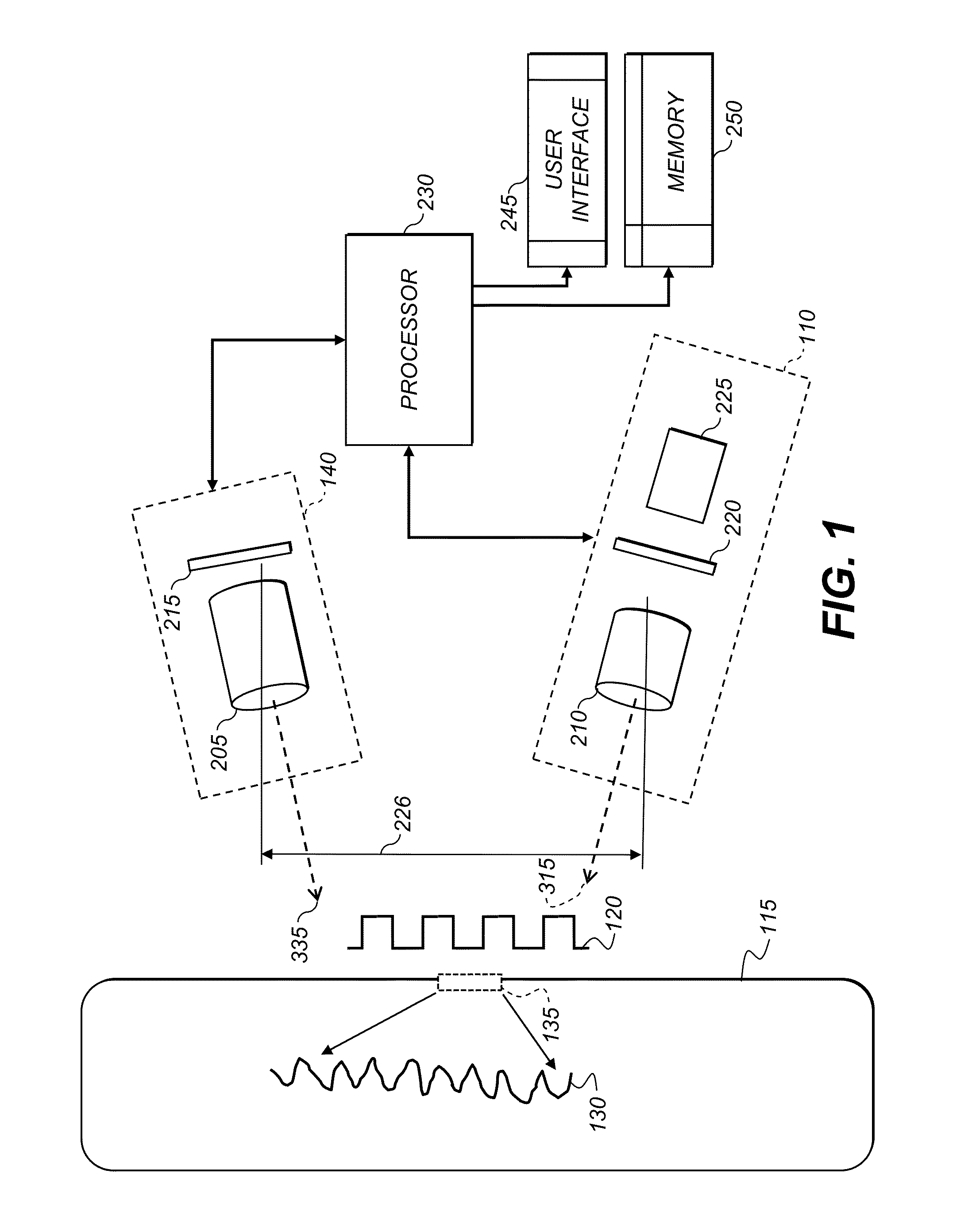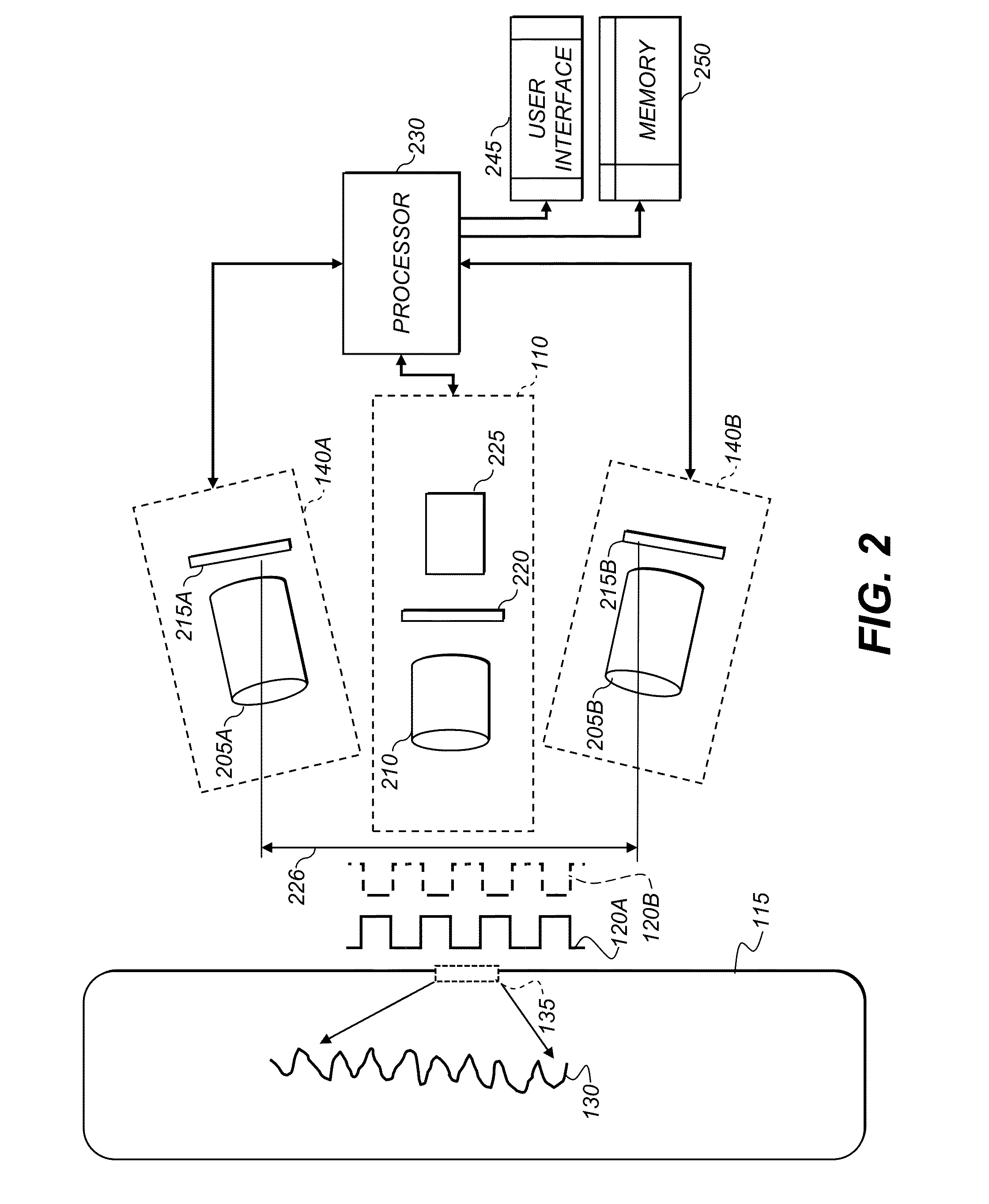Encoding information in illumination patterns
- Summary
- Abstract
- Description
- Claims
- Application Information
AI Technical Summary
Benefits of technology
Problems solved by technology
Method used
Image
Examples
Embodiment Construction
[0032]The present invention will be directed in particular to elements forming part of, or in cooperation more directly with the apparatus in accordance with the present invention. It is to be understood that elements not specifically shown or described may take various forms well known to those skilled in the art.
[0033]In order to ensure a robust encoding, and data retrieval that are applicable for a range of objects and items, as well as usages such as authentication, the preferred embodiment of the present invention focuses on three key elements: information to be encoded, a specified surface texture that is identified, created or modified on the surface of the object or an item, and which is used in the process of encoding, retrieving and / or decoding information, and structured light pattern, which carries encoded information and is applied on the specified surface texture in order to retrieve and / or decode the information. All three elements are specified, designed and utilized...
PUM
 Login to view more
Login to view more Abstract
Description
Claims
Application Information
 Login to view more
Login to view more - R&D Engineer
- R&D Manager
- IP Professional
- Industry Leading Data Capabilities
- Powerful AI technology
- Patent DNA Extraction
Browse by: Latest US Patents, China's latest patents, Technical Efficacy Thesaurus, Application Domain, Technology Topic.
© 2024 PatSnap. All rights reserved.Legal|Privacy policy|Modern Slavery Act Transparency Statement|Sitemap



